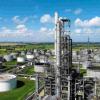Dear all,
As we are trying to do Thermal Relief Valve (TRV) sizing, we got stuck with some points.
As per API 520(7th ed.), liquid relief valve with capacity certification requirement shall be designed with 10% overpressure and liquid relief valve without requirement of capacity certification shall be designed with 25% of overpressure. Based on the certification requirement, the design of TRV may vary.
I just want to know, whether TRV requires capacity certification or is this applicable only to pressure relief valves.
What are the criteria and when to consider this certification?
Looking for your guidance.
Regards,
Swak
|
|
Requirement Of Capacity Certification For Thermal Relief Valve(Trv)
Started by swak, Nov 20 2009 03:52 AM
1 reply to this topic
Share this topic:
#1

Posted 20 November 2009 - 03:52 AM
#2

Posted 25 November 2009 - 07:14 PM
Time to get on my soap box.
There is no such thing as a thermal relief valve. These valves relieve pressure, not temperature or heat. I wish industry would stop calling them thermal relief valves. They are pressure relief valves for the case where liquid expands due to an increase in heat input, this expansion causes excessive pressure in a completely liquid full system.
Now, let's get back to the question.
Pipelines fall under ASME B31.x, not Section VIII but if you read ASME B31.3 for instance, it refers you to ASME Section VIII, Div. 1 with specific paragraphs to follow. One of these paragraphs is UG-125©and this section tells you not to allow the pressure to rise more than 10% or 3 psi, whichever is greater, than MAWP. So, yes, you use the code equation to do the sizing.
I strongly suggest that you try to ignore the fact that the non-code equation even exists. It may be useful for older installations where the PSV is sized and constructed strictly for vapor/gas but you need to check it against a liquid. The gas and liquid code equations apply very well to present day PSVs. If in doubt on the particular application of the equations, call the vendor.
Phil Leckner
There is no such thing as a thermal relief valve. These valves relieve pressure, not temperature or heat. I wish industry would stop calling them thermal relief valves. They are pressure relief valves for the case where liquid expands due to an increase in heat input, this expansion causes excessive pressure in a completely liquid full system.
Now, let's get back to the question.
Pipelines fall under ASME B31.x, not Section VIII but if you read ASME B31.3 for instance, it refers you to ASME Section VIII, Div. 1 with specific paragraphs to follow. One of these paragraphs is UG-125©and this section tells you not to allow the pressure to rise more than 10% or 3 psi, whichever is greater, than MAWP. So, yes, you use the code equation to do the sizing.
I strongly suggest that you try to ignore the fact that the non-code equation even exists. It may be useful for older installations where the PSV is sized and constructed strictly for vapor/gas but you need to check it against a liquid. The gas and liquid code equations apply very well to present day PSVs. If in doubt on the particular application of the equations, call the vendor.
Phil Leckner
Similar Topics
Automatic Choke ValveStarted by Guest_Mudassssir011_* , 22 Jul 2025 |
|

|
||
Relief Path To Be Considered For Inlet Pressure Drop CalculationStarted by Guest_Ascanio E._* , 09 Jul 2025 |
|

|
||
Free Vent For Api 650 Tank - Bug Screen / Bird Screen RequirementStarted by Guest_Cabbarbeybaba_* , 03 Jul 2025 |
|

|
||
Valve Cv InputsStarted by Guest_QuantumEng_* , 01 Apr 2024 |
|

|
||
Design Capacity Of Hydrogen Pullet During Hydroprocessing Units UpsetStarted by Guest_Divid Kelin_* , 18 Jun 2025 |
|

|

 FB
FB







